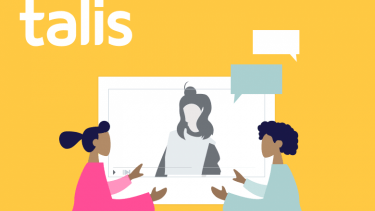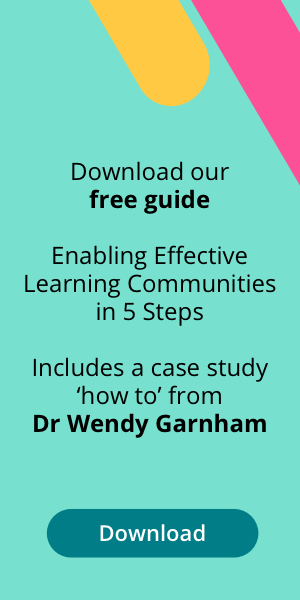
Tools for online reading can help students to better engage with texts and allow educators to improve their teaching
Written by Dr Jamie Wood, associate professor in history in the School of History and Heritage at the University of Lincoln.
Over the past two decades, we have witnessed a revolution in what students read, and how and where they read it. The physical space of the university library, while still vitally important for many, is now complemented by vast and ever-expanding digital collections.
The growth of various platforms for e-learning, the prevalence of mobile technologies, and the digitalisation of all sorts of texts means reading is increasingly an online, digital activity. The pandemic has further accelerated the pace of these changes, which have profound implications for how our students learn and how we teach them.
Yet, with some notable exceptions, such as Jenae Cohn’s recent book Dive Surface: Teaching Digital Reading, we are only slowly waking up to the need for serious work on students’ online reading practices. Even before we think about digital approaches to reading, we need to think more deeply about how we teach students to read at university.
There are two challenges to overcome here. First, many of us assume that students know how to read when they arrive at university and that if they cannot read as we want them to then it’s either their fault or due to the negligence of those who taught them at school. These are false assumptions – of course students know how to read in order to get into university in the first place. What they don’t necessarily know is how to read (or write) at university level in the discipline that they have chosen. It is our job to help them to do that, and the first step is to move beyond a deficit model when thinking about student reading as they make the transition to university study.
The second reason for the lack of focus on online reading is that pedagogies for offline reading are not particularly well-developed in most disciplines. True, many degree programmes include modules on critical thinking and try to train students to find, evaluate and use information effectively, especially early in their studies. But such courses are often shunted into generic skills pathways that are unpopular with students and staff. More successful are efforts to embed reading instruction into discipline-specific contexts, although the first time that most of us “see” the results of students’ reading is when we assess their work. This is far too late.
Rather than telling students what they have done wrong and hoping they mend their ways gradually across the course of their studies, we should be engaged in much more purposeful and systematic efforts to develop their abilities to read within our disciplines from their first weeks with us. One (very engaged) first-year student who I’ve talked to recently described their experience at university as having taken the joy out of reading. How must less-engaged students feel?
It is here that online reading can help us. For the past three years, I have been working with colleagues and students in the School of History and Heritage at the University of Lincoln in partnership with educational technology company Talis to trial and develop their resource annotation tool, Talis Elevate. This project, which has drawn on insights from a range of institutions and subjects, has prompted me to examine my assumptions about how students read in online and offline contexts, and to consider how we teach them to read in our disciplines.
Talis Elevate enables students to annotate resources (text, images, audio, video) that the tutor has shared with them via the platform. They can take private notes but, for me at least, the main point is to get them to share their thoughts about what they’ve read with each other. I do this by encouraging them to analyse the text, ask questions and make connections to other things that they’ve learnt. Some students really enjoy this and seem to get a lot out of it in developing their knowledge, skills and confidence; others, you won’t be surprised to find out, are less enthusiastic.
But the point I want to make isn’t about Talis Elevate; a range of other tools are out there and I’ve found that it’s possible to do a great deal with a shared Word or Google doc, for example. What platforms for online reading allow us to do is get a handle on how students read. You can look in the back end at user data or learner analytics and start to track patterns of engagement and activity. For example, I’ve found out that many students, even those who engage very actively, only read the first few pages of the set reading and most don’t read to the end.
Even more immediately, however, by looking at the annotations it’s possible to see what students think about reading while they are doing it, how they respond to one another’s comments and to start to get a sense of which bits of texts students find interesting or problematic (because comments tend to cluster on those points in the text). This has allowed me to engage much more constructively with students’ reading, choosing the extracts they find interesting for discussion in class and structuring tasks around their questions about texts, not mine.
Tools for online reading have the potential, in the long term, to provide information and insights that can help us to enable our students to become more engaged and critical readers, whether online or offline, of digital texts or physical books. I’m not sure if this will enable us to put the joy back into reading, but it’ll certainly help more students to read more effectively.
Want to learn more?
Dr Jamie Wood is leading a project called Active Online Reading, funded by Talis and the QAA. It will be informed by insights derived from the use of technologies such as Talis Elevate in history at the University of Lincoln, the University of Nottingham and University College London. The project investigates student perceptions and practices of online reading in history and a range of other disciplines in order to identify and share best pedagogic practice across the sector.
To find out more, click here.


